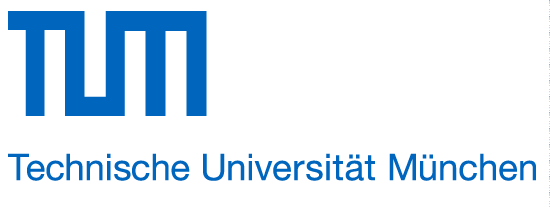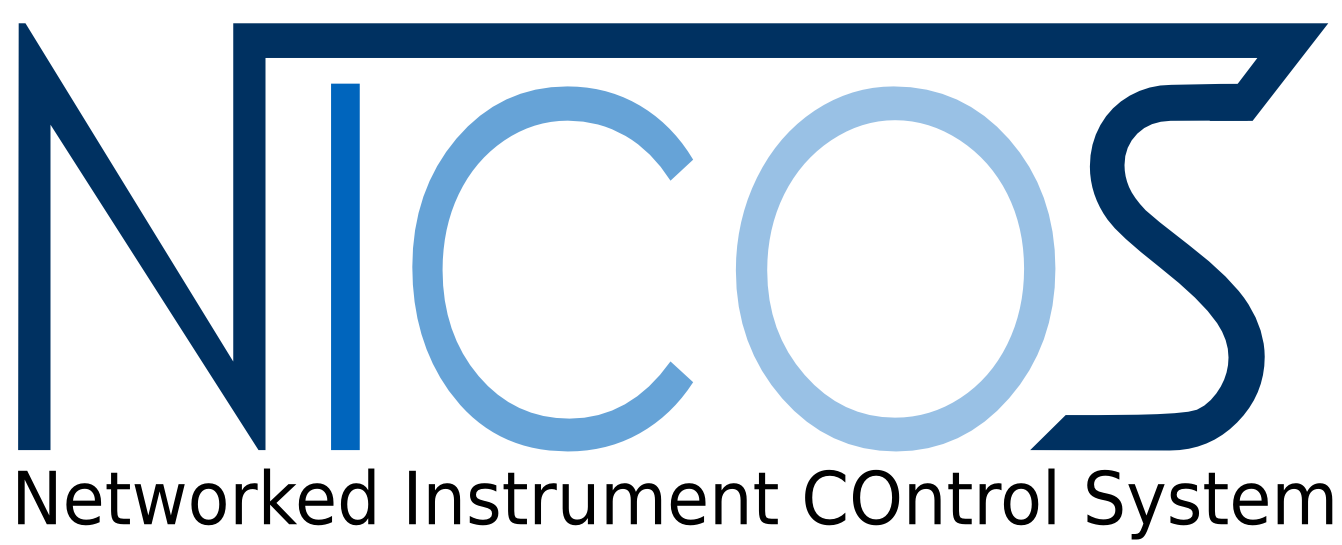MLZ is a cooperation between:
 > Technische Universität München
> Technische Universität München > Helmholtz-Zentrum Hereon
> Helmholtz-Zentrum Hereon
 > Forschungszentrum Jülich
> Forschungszentrum Jülich
MLZ is a member of:
 > LENS
> LENS > ERF-AISBL
> ERF-AISBL
MLZ on social media:

MLZ (eng)
Lichtenbergstr.1
85748 Garching
PGAA
Prompt gamma activation analysis
This instrument is focussed on cold neutrons. All parameters given here are valid during the current operation of FRM II. Please get in touch with the instrument team well in advance for all further details (length of experiment etc.).

The approximate detection limits of the chemical elements assuming a typical environmental sample under usual measuring conditions using PGAA
PGAA as a method
Prompt Gamma Activation Analysis was recommended by Heinz Maier-Leibnitz in 1963. He immediately recognised the importance of low spectral background which is still the most important step in the instrument development. The first PGAA experiments were performed by Henkelmann and Born at FRM and ILL, Grenoble in 1968. FRM II also established a PGAA facility to offer elemental analysis for different fields of science.
Neutrons and gamma rays have a large penetration depth even in condensed matter, so samples with thicknesses up to a couple of centimeters can analysed. The samples can be measured without any specific preparations, and the method yields the bulk composition of the irradiated volume. PGAA is non-destructive. The sample can be in any physical form: in proper containers, liquids and gases can also be measured. Also the chemical form of the sample has no influence on the analysis. For each element, the result of the non-destructive analysis is an averaged concentration (mass fraction) over the irradiated sample volume, i.e. a bulk analysis.
In principle, all the chemical elements can be analysed with PGAA. The analytical sensitivity of the method mainly depends on the neutron capture cross section of the elements which typically varies in the millibarn-kilobarn range. Certain elements can be determined only as major components (such as O, C, Be, Bi), some as trace elements (B, Cd, rare-earths) with detection limits down to nanograms, while most elements can be analysed in the microgram range. The major advantage of the method is its capability in the analysis of light elements. It has a unique sensitivity for hydrogen or boron, which can be determined in the ppm and ppb level, respectively.
Dynamic range
Gamma spectra have an inherent dynamic range, i.e. the smallest detectable peaks have an area of 10 – 100 counts. However, the area of the same peaks have a practical upper limit, too, which is about six orders of magnitude higher, than the smallest detectable area. Hence, the elements detectable on the ng level can be determined up to mg level, i.e. as minor elements, and never major components, in much higher quantities than a milligram, because the peaks of the sensitive element alone will mask those from all other elements.

The approximate detection limits of the chemical elements assuming a typical environmental sample under usual measuring conditions using in-beam NAA.
In-beam Neutron Activation Analysis (ibNAA)
Activating in beam is advantageous because the neutron self-absorption can be corrected for in a much simpler way than in an isotropic neutron field. Guided beams do not contain epithermal or fast neutrons, thus the activation process can also be described much simpler. Thanks to the high flux irradiation, many elements are activated, i.e. the induced radioactivity can be counted with much better sensitivities, than when using PGAA alone. Activity counting takes place in a low-background counting chamber with higher detector efficiencies. Even short-lived nuclides (with half-lives of a few seconds) can be detected here.
As in traditional NAA, the light elements are normally impossible to analyse based on their induced radioactivities. In the first two periods, the only exception is fluorine whose half-life is just 11 s, and its cross section is also low (9.6 mb), but right after the irradiation, it can be measured with a fair sensitivity. Cyclic irradiations/ measurements can help in this context. The real strength of NAA is the analysis of elements in the fourth period of the Periodic Table and above, however, a few lighter ones are detectable with high sensitivities (like Na, Mn, Sc), too. The typical detection limit is around or even below the μg level.
Classic NAA, without chemical treatment also called instrumental NAA (INAA), can also be performed at FRM II. The activation takes place in the irradiation channels of the reactor in a much higher flux (1013 – 1014 cm–²s–1). The highly thermalised neutron field of the FRM II reactor offers unique possibilities for the classical instrumental NAA, too.
PGAA and NAA complement each-other. PGAA is best used for the determination the major components of the samples, while NAA analyses the (minor and) trace elements.
- Archaeology – restauration / conservation, provenance, check of authenticity (ceramics, glass, building material, coins and other metal objects)
- Cosmochemistry (mainly meteorites)
- Geology / Petrology (maceral sediments, iron ore)
- Environmental Research (air pollution, alluvial sediments)
- Medicine (B, Li, Cd, Mn in tissue, nano particles for cancer therapy, irradiation damages of DNA)
- Semiconductor and Superconductor Materials (e.g. H, B, P in Si for solar cells)
- Analysis of new Materials (catalysts, clathrates, crystals, superalloys)
- Reactor Physics (shielding, new materials)
- Irradiations (test of radiation hardness of chips, scintillators)
- Basic Research (nuclear data, low-spin excited states in nuclei, partial and total cross sections for neutron capture)
The samples are located in the beam in aluminum frames among Teflon strings. Their typical diameter is a few centimeters with thicknesses in the millimeter range. 16 such samples can be placed in the automatic sample changer. The sample chamber can be evacuated to exclude the possibly interfering prompt gamma lines of nitrogen (and argon).
Neutron beam
The PGAA facility is located in the neutron guide hall at the end of the curved neutron guide 4b with the length of 55 m. The last 6.9 m of the guide is elliptically tapered. The thermal equivalent flux (or the capture flux) of the focused neutron beam in the focal is about 3 · 109 n cm–2 s–1 and in the sample position about 2 · 109 n cm–2 s–1. The last 1.1 m of the elliptical guide can be replaced by a set of collimators keeping the beam uniform and parallel.
Using a set of beam attenuators, the flux can be adjusted over three orders magnitude between 1 · 106 n cm–2 s–1 and 2 · 109n cm–2 s–1.
Two different beam conditions:
For bigger samples with collimation:- Beam size: 20 × 30 mm2
- Neutron beam flux max.: 2 × 108 n cm-2 s-1
- Beam size: 11 × 16 mm2
- Neutron beam flux max.: 6 × 109 n cm-2 s-1
- Vacuum down to 0.05 mbar
- Standard sample masses: 0.1 mg – 10 g
- max. standard sample size: ca. 40 × 40 × 40 mm3
- larger samples can be measured in a special arrangement
- automatic measurement: up to 16 samples per batch (a carousel with pneumatic lift)
- Powder samples (and certain condensed samples) are sealed in FEP bags or other suitable foils
- Standard PGAA with Compton suppression (60-% HPGe detector surrounded by BGO scintillator in anti-coincidence mode). LEGe detector available for high resolution measurements in the low-energy region.
- Separate low-background chamber with 30 % HPGe detector and DSpec-50 unit for recording of decay spectra after in-beam sample activation
- Energy range: 30 keV – 12,000 keV
- Detector #1: n-type high-purity germanium (HPGe) detector (manufactured by Ortec) with a relative efficiency of 60 % surrounded by bismuth germanate (BGO) scintillator annulus for Compton suppression.
- Detector #2: n-type low-energy HPGe (LEGe) detector (manufactured by Canberra) for the detection of low-energy gamma ray (typically <1MeV) surrounded by bismuth germanate (BGO) scintillator annulus for Compton suppression.
- Detector #3: n-type high-purity germanium (HPGe) detector (manufactured by Ortec) with a relative efficiency of 30 % surrounded by sodium iodide scintillator annulus for Compton suppression.
Detectors #1 and #2 are on the two opposite sides of the PGAA sample chamber to detect the prompt gamma rays from the irradiated samples. Detector #3 is located outside the concrete bunker of the facility in a low-background chamber dedicated to counting the activated nuclides for iBNAA.
Shielding
The shielding is made of mainly lead against the high-energy gamma rays, lined with boron- and lithium-containing layers to shield against neutrons. The components can be easily moved or modified, so that the shielding accommodates other setups (NDP, Prompt Gamma Activation Imaging + Neutron Tomography (PGAI-NT) or gamma-gamma coincidence system).
- Software with NICOS-GUI for automatic control for up to 16 samples per batch
- automatic data acquisition with DSPEC-50 digital spectrometers
- Calibration of the system (efficiency function and non-linearity) and unfolding of spectra with Hypermet-PC Software (developed in Budapest)
- Data evaluation including calculation of the elemental composition with Excel macrosheet package ProSpeRo
[1] B. Fazekas, J. Östör, Z. Kis, G. L. Molnár, A. Simonits: The new features of Hypermet-PC, in: Proceedings of the 9th International Symposium on Capture Gamma-Ray Spectroscopy and Related Topics, Budapest, Hungary, October 8-12, (Eds. G. Molnár, T. Belgya, Zs. Révay) Springer Verlag, Budapest/Berlin/Heidelberg, 1997, p. 774.
[2] Zs. Révay, R.B. Firestone, G.L. Monár, T. Belgya, in: Handbook of Prompt Gamma Activation Analysis with Neutron Beams (Ed. G.L. Molnár) Kluwer, Dordrecht, 2004, p. 173.
[3] Zs. Revay, Anal. Chem. 81 (2009) 6851.
- Zs. Révay, T. Belgya, in: Handbook of Prompt Gamma Activation Analysis with Neutron Beams (Ed. G.L. Molnár) Kluwer, Dordrecht, 2004, p 1.
- M. Crittin, J. Kern, J.-L. Schenker, Nucl. Instrum. and Meth. A449 (2000) 221.
- P. Kudejova et al, J Radioanal Nucl Chem 265 (2005) 221.
- Zs. Révay, P. Kudějová, K. Kleszcz, S. Söllradl, Christoph Genreith: In-beam activation analysis facility at MLZ, Garching, Nucl Instrum Meth A799114–123.
Instrument Scientists
Dr. Zsolt Revay
Phone: +49 (0)89 289-12694
E-Mail: zsolt.revay@frm2.tum.de
Dr. Christian Stieghorst
Phone: +49 (0)89 289-54871
E-Mail: christian.stieghorst@frm2.tum.de
PGAA
Phone: +49 (0)89 289-14906
Operated by

TUM Logo © TUM
Publications
Find the latest publications regarding PGAA in our publication database iMPULSE:
Citation of the instrument
Heinz Maier-Leibnitz Zentrum. (2015). PGAA: Prompt gamma and in-beam neutron activation analysis facility. Journal of large-scale research facilities, 1, A20. http://dx.doi.org/10.17815/jlsrf-1-46
Zs Revay, P Kudejova, K Kleszczm S Sölradl, Ch Genreith, In-beam activation analysis at Heinz Maier-Leibnitz Zentrum, Garching. (2015). Nucl Instrum Meth A799, 114-123. http://dx.doi.org/10.1016/j.nima.2015.07.063
For citation please always include the DOI.
Instrument control
MLZ is a cooperation between:
 > Technische Universität München
> Technische Universität München > Helmholtz-Zentrum Hereon
> Helmholtz-Zentrum Hereon
 > Forschungszentrum Jülich
> Forschungszentrum Jülich
MLZ is a member of:
 > LENS
> LENS > ERF-AISBL
> ERF-AISBL
MLZ on social media:




